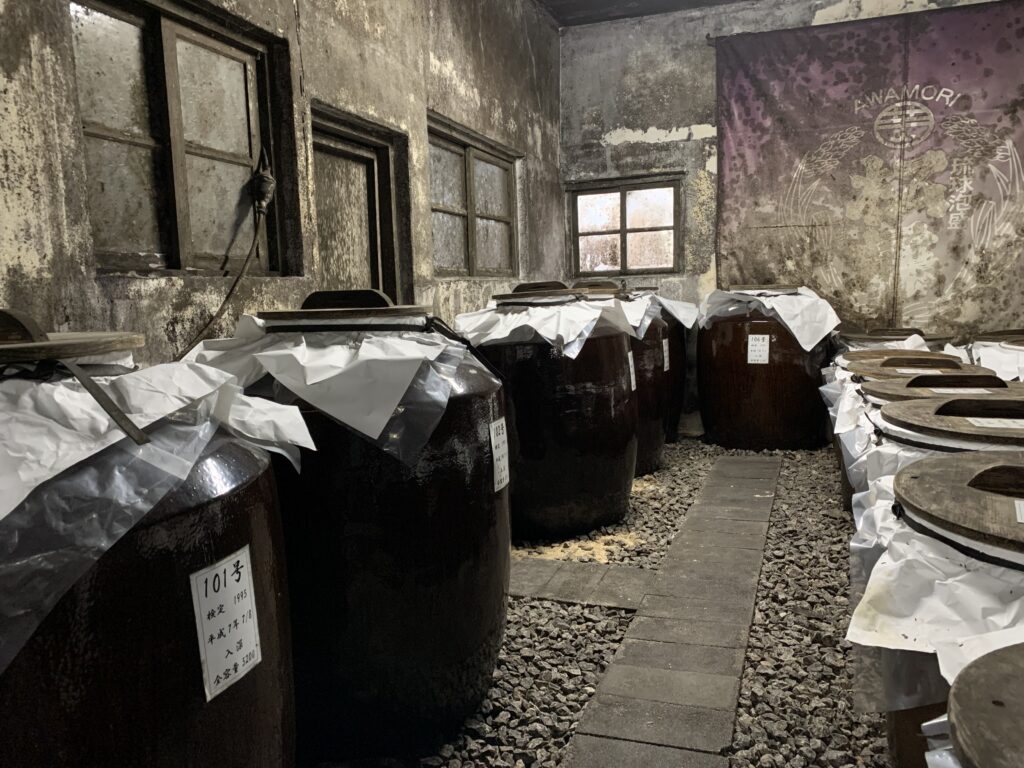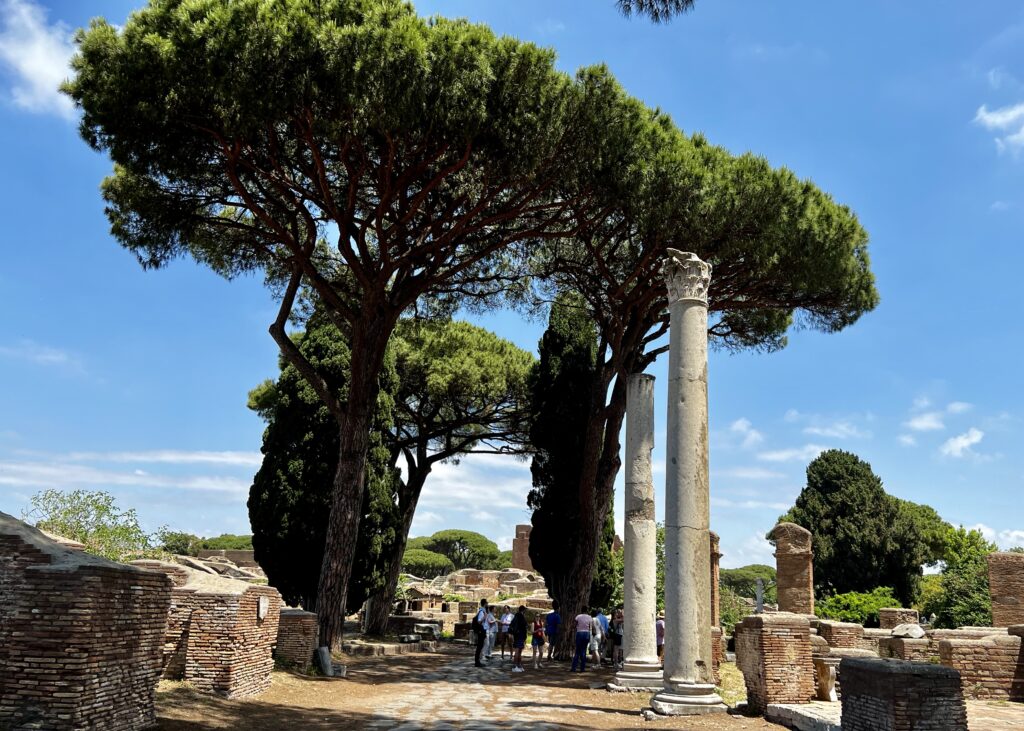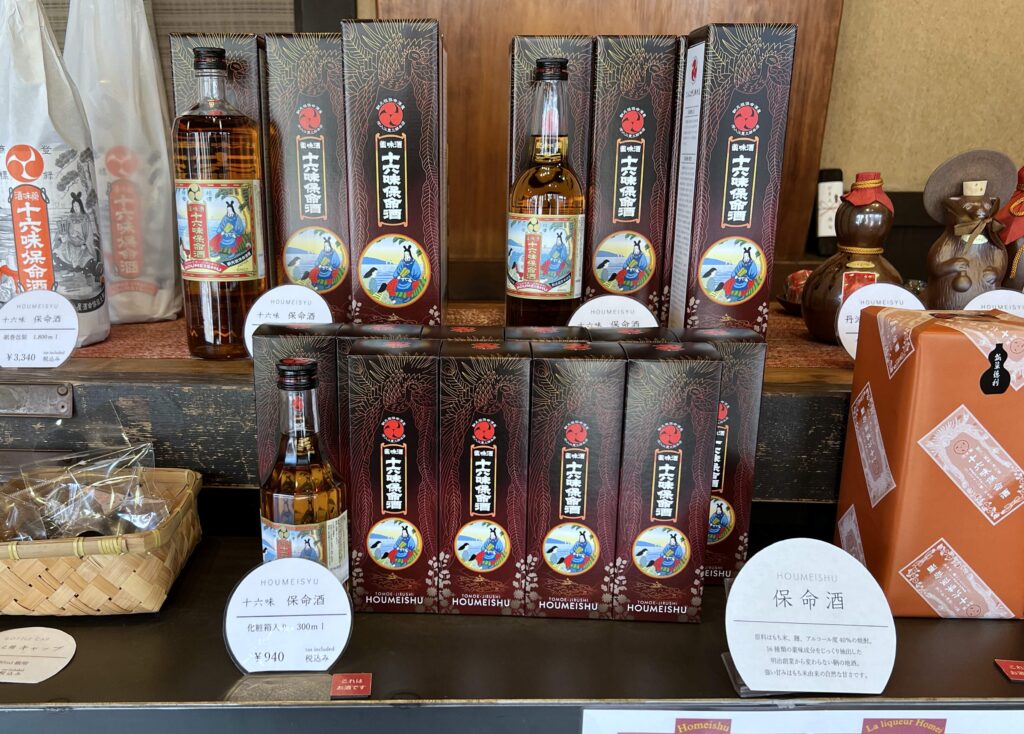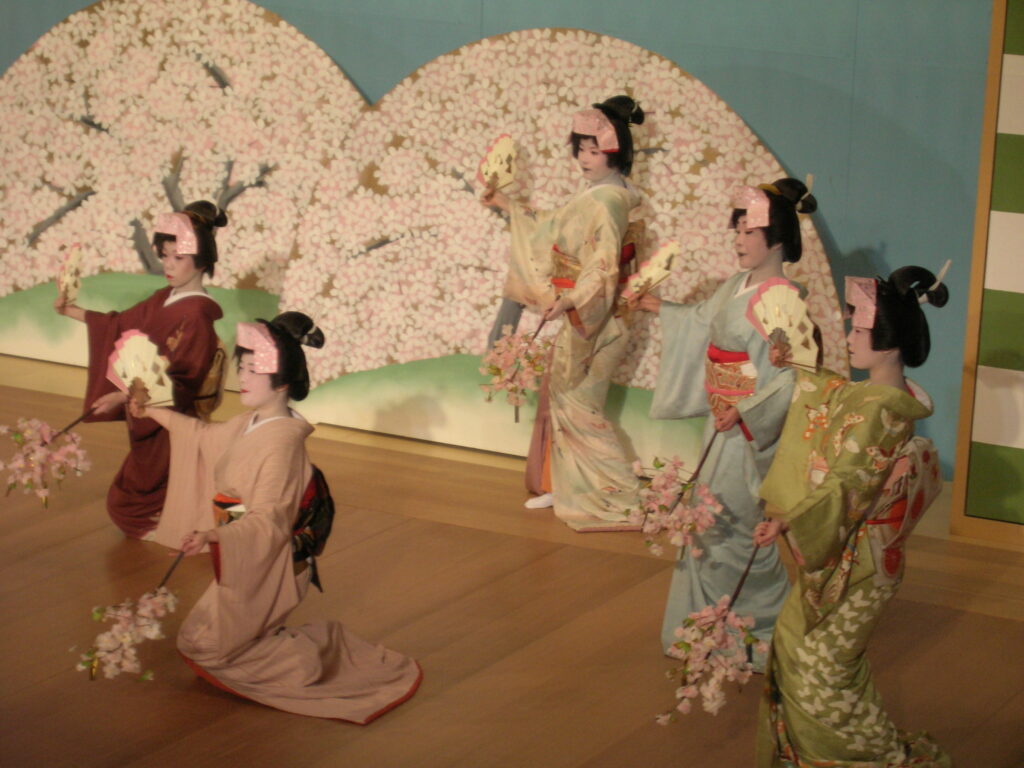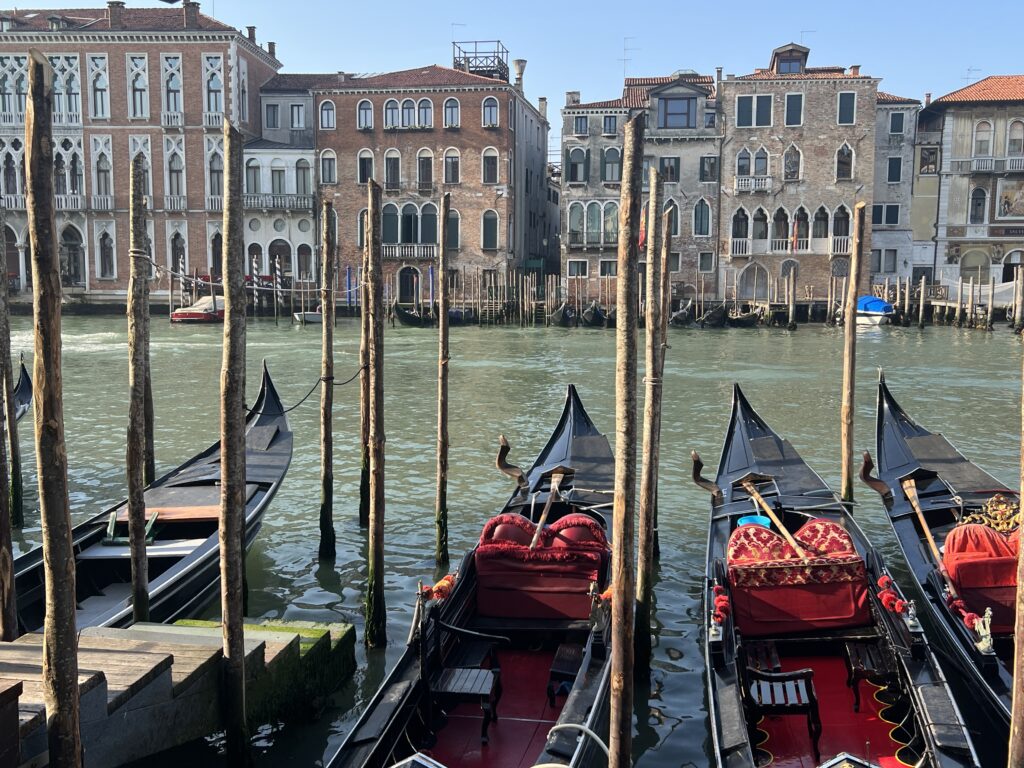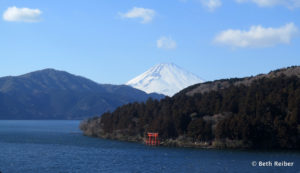Travel around the globe necessarily ground to a stop with the onslaught of the COVID-19 pandemic. But even before the virus there were always possible derailments to the best-laid plans: weather, illness, political instability, natural disasters, missed or cancelled planes, bad luck, and just plain stupidity. In my case, a planned three-day stay in Dominica, dubbed The Nature Island of the Caribbean, dwindled to one due to a tropical storm and torrential rains. What could I possibly write about a country I saw for only one day? To top it off, I dropped my camera into a stream I was fording in one of Dominica’s national parks. Later my phone died. After I returned home, I turned to other destinations and stayed busy.
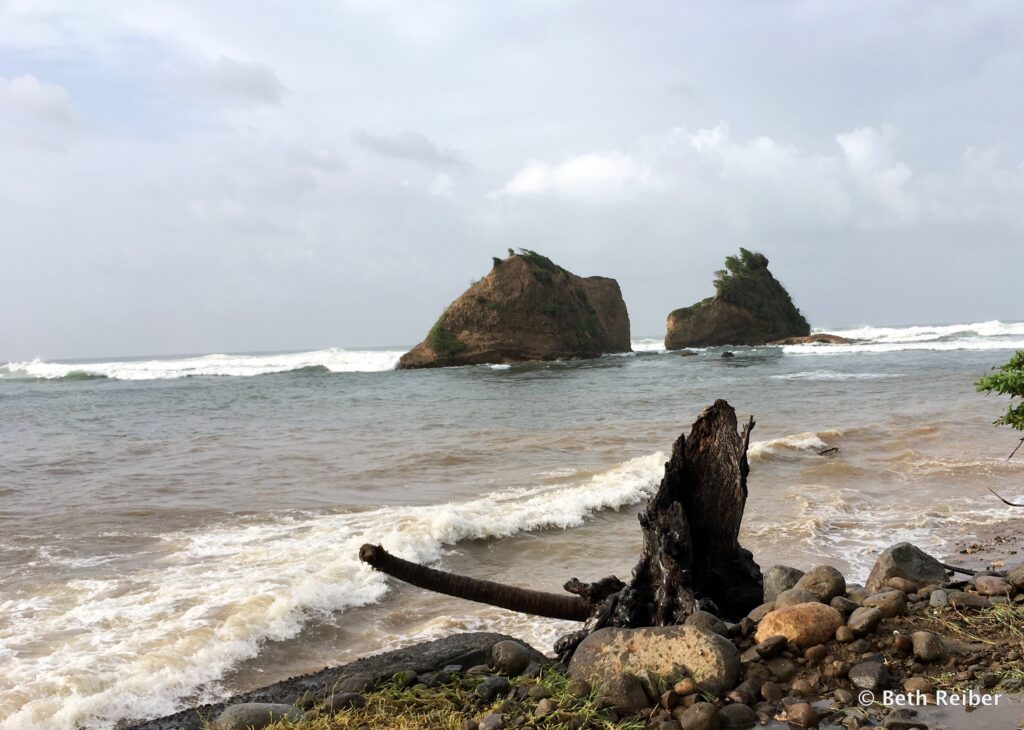
Now, with nowhere to go, I’ve returned my attention to Dominica. Was there really nothing I could write about? After reading my notes and journal and going through the 200-some photos I did manage to take on my phone and camera (luckily, my memory stick survived even though my camera was destroyed), I realized that even just one day left lasting impressions. This is a story mostly about what I saw, plus regrets of what I missed and what you shouldn’t. Dominica is a remarkable country, but not, perhaps, for the reasons you’d expect of a Caribbean isle.
The facts, please
First off, you need to know that Dominica is pronounced with the emphasis on the third syllable (“Dom-in-EEK-a”). It’s located in the eastern Caribbean, between the French islands Guadeloupe and Martinique. Dominica, too, might have ended up French instead of the English-speaking country it is, because the French came in the 1690s, established coffee plantations and imported the first slaves from West Africa. But the English gained possession of the island in 1763 following the Seven Years’ War, maintaining its rule until 1978 when Dominica gained independence. The island is a republic with a parliamentary democracy and is a member of the Commonwealth.
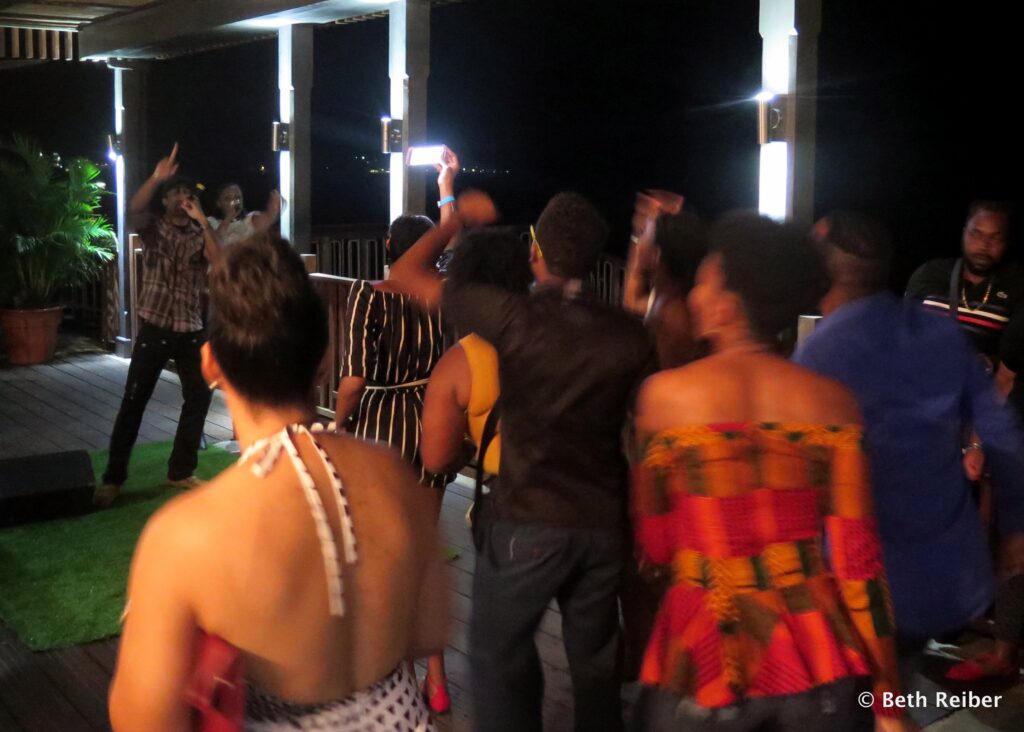
Dominica is sparsely populated, with only about 71,000 people inhabiting its 290 square miles (by contrast, almost one million Texans live in Austin’s 272 square miles). A vast majority of Dominica’s residents are of African descent (86%), followed by about 9% of mixed race. Dominica is also the only eastern Caribbean island with a sizable pre-Columbian indigenous population. With few resources other than its stunning natural beauty, Dominica is one of the Caribbean’s poorest islands. That becomes apparent as soon as you step off the plane, because with no international airport of its own (yet), getting to Dominica requires connecting from more well-to-do places like Martinique, Guadeloupe, Barbados, St. Thomas or other international hubs, all of which attract more tourists.
Bananas used to be the main cash cow, but an onslaught of hurricanes devastated the industry, especially in 2007 when Hurricane Dean wiped out 99% of the trade. None was more catastrophic than Hurricane Maria, which struck in 2017 and killed 65 people, destroyed homes, schools, roads, bridges and more, and stripped vegetation from trees and shrubs. Leaves grew back within a year, reconstruction is still ongoing, and even bananas are making a comeback.
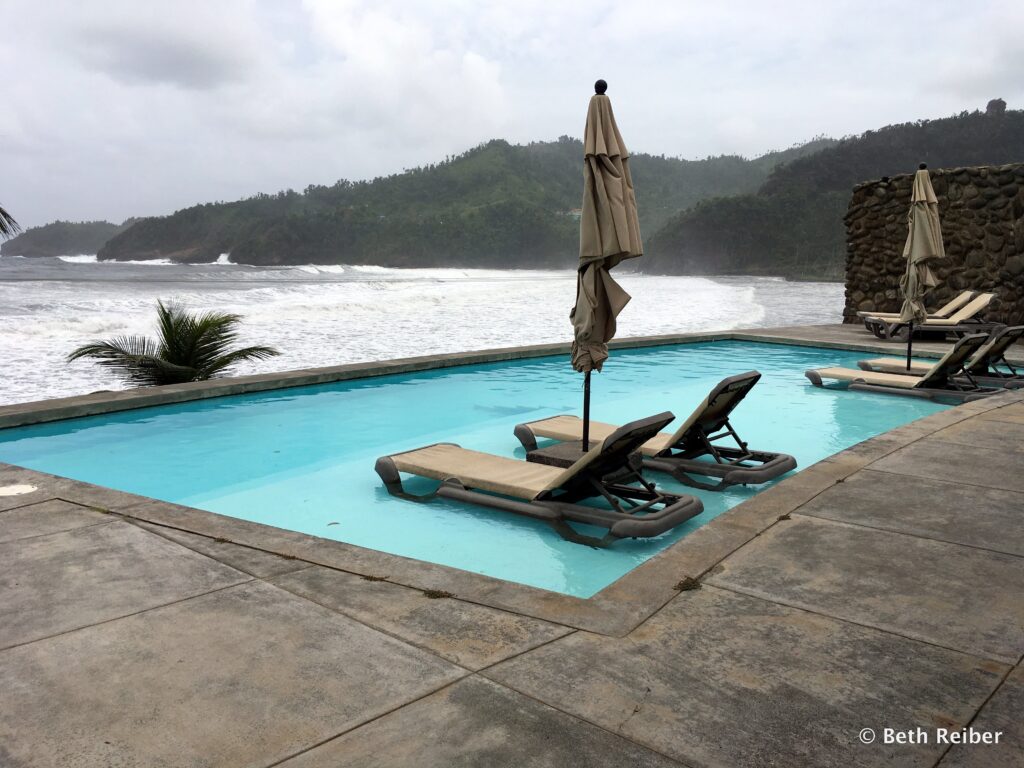
Like the rest of the Caribbean, tourism is big business for Dominica, with one or two cruise ships disgorging some 300,000 passengers most days from October to April. Some of those passengers are impressed enough to return for an extended stay, leading to a small but steady increase in luxury hotels, like Cabrits Resort and Spa Kempinski, which opened in 2019. However, because Dominica is mostly volcanic, with few of the white sandy beaches and tourist attractions that lure most vacationers to the Caribbean, it doesn’t have the mass tourism nor the unending string of beach resorts that mar other islands. That, of course, is part of Dominica’s charm.
What Dominica, the nature island, does have are mountains, volcanoes, 365 rivers, waterfalls, hot springs, coral reefs, lush rainforests covering about two-thirds of the island, and rare plants and animals, including the Sisserou Parrot, found only here and honored as the national bird. It’s home to the world’s second-largest hot spring and the longest trekking trail in the Caribbean. With its pristine beauty, little wonder Dominica was used as a shooting location for two of the movies in the Pirates of the Caribbean franchise.
First impressions of Dominica, the nature island
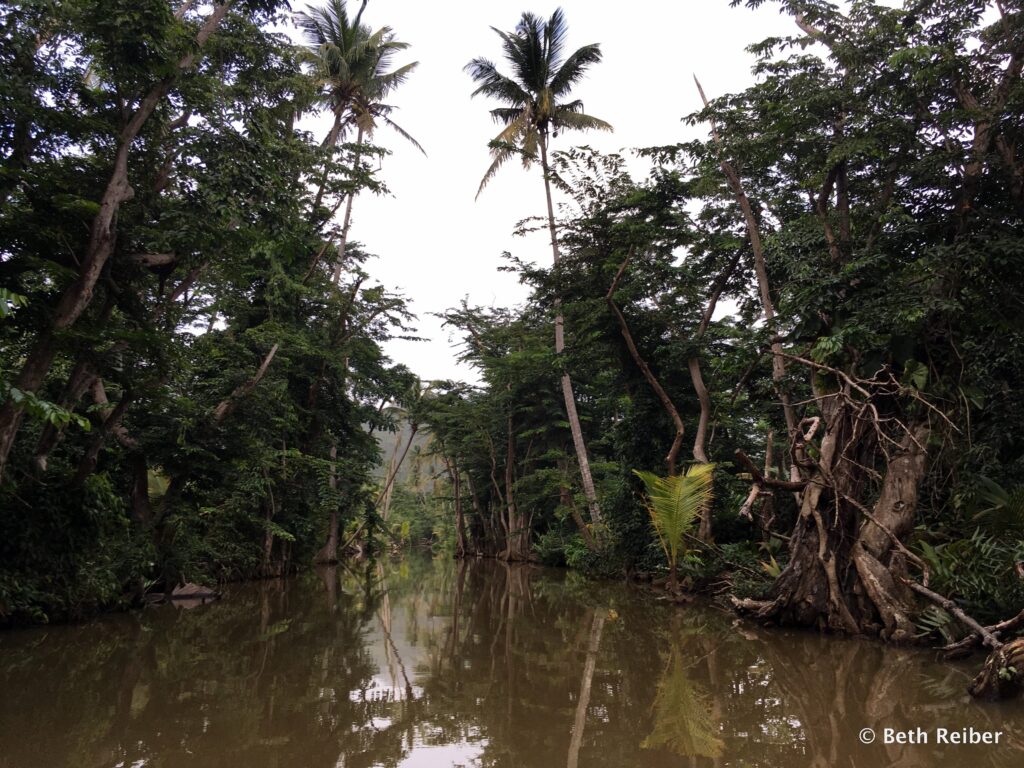
I and three other travel writers/photographers flew to Dominica from Barbados, after attending the national SATW (Society of American Travel Writers) convention there. There are always pre- and post-convention trips offered so that we can gather information for more stories. Participants for the Dominica trip were limited to four people, so we felt lucky despite having only one day.
The first thing I noticed after our minivan driver picked us up at the airport on Dominica’s northeastern side to transport us to the capital of Rouseau on the island’s opposite end, was how mountainous Dominica is. Steep hills are cloaked in vegetation so lush and primordial, it seems like a perfect setting for Jurassic Park. Giant ferns, banana trees, palm trees, bamboo and trees and shrubs I couldn’t identify create a dense layer of verdant green, offset by gashes of brilliantly red earth and rivers strewn with boulders. Dominica also reminded me of a fantastical Middle Earth, with trees and towering tree stumps so completely blanketed with invasive vines that they looked like giant green monsters seemingly on the move. It is all hauntingly beautiful.
The other thing I quickly noticed is that driving in Dominica is not for the faint of heart. Driving is on the left, but that’s the least of your worries. Roads everywhere are narrow and curvy, with those cutting across the hilly interior bordered by a culvert on the mountain side and a drop-off into a ravine on the other. That didn’t concern our driver, who careened around hair-raising blind curves like it was the Indy 500 and couldn’t bear playing second-fiddle to any cars ahead. Needless to say, no one bothers with seat belts, and on the hour’s drive to the other side and through the streets of Rouseau, I didn’t see any other tourists. In fact, I hardly saw any tourists, period. That’s because there were no cruise ships at port, which naturally would have changed everything. From my experiences in other port towns like Cozumel and Key West, I know that towns are infinitely more relaxed–more themselves, perhaps–when there are no cruisers in town.
What I did on the Nature Island
Rouseau
After a good night’s sleep listening to lapping waves at Fort Young Hotel, I hightailed it early the next morning to Saturday’s Rouseau Market. Locals sell fruit and vegetables from their own gardens, either at tables they’ve set up or from the backs of pickup trucks. There was a wide variety of produce–ginger, potatoes, bananas, peppers, dashi, yam, passion fruit, pineapple, pumpkins, sugar cane, carrots, cabbage and beets, as well as castor oil, honey, flowers and more. Vendors were friendly, and when I couldn’t identify something they were happy to explain what it was. They didn’t try to sell me anything or talk me into going on some tour. Instead, they asked how I was doing. On the way back to the hotel, I stumbled upon the local craft market just setting up. A vendor insisted on giving me a pair of earrings that perfectly matched the shirt I had on, crafted out of coconut shells by her own hands. Despite my attempts, she wouldn’t accept any payment.
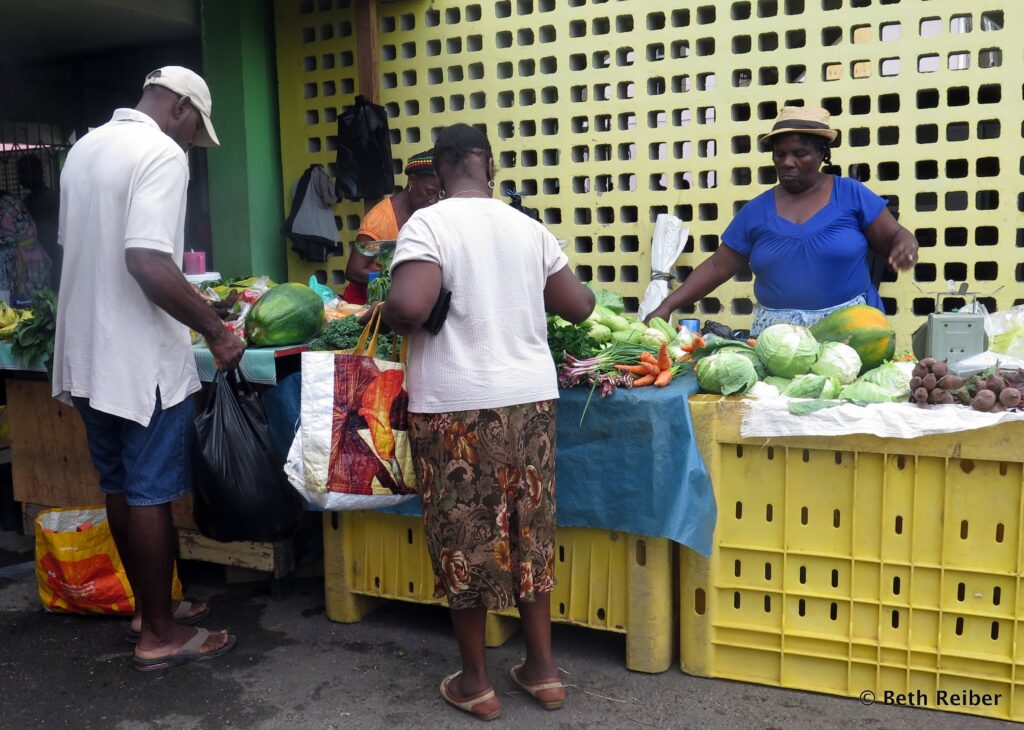
Rouseau is a laid-back town of about 16,000 inhabitants and no stoplights (actually, I didn’t see a stoplight on the entire island). In contrast to our racecar driver, people in town seemed to have all the time in the world. When a family stopped their car to buy vegetables from a vendor, not a vehicle in the line behind them honked or seemed impatient.
A hike to Middleham Falls
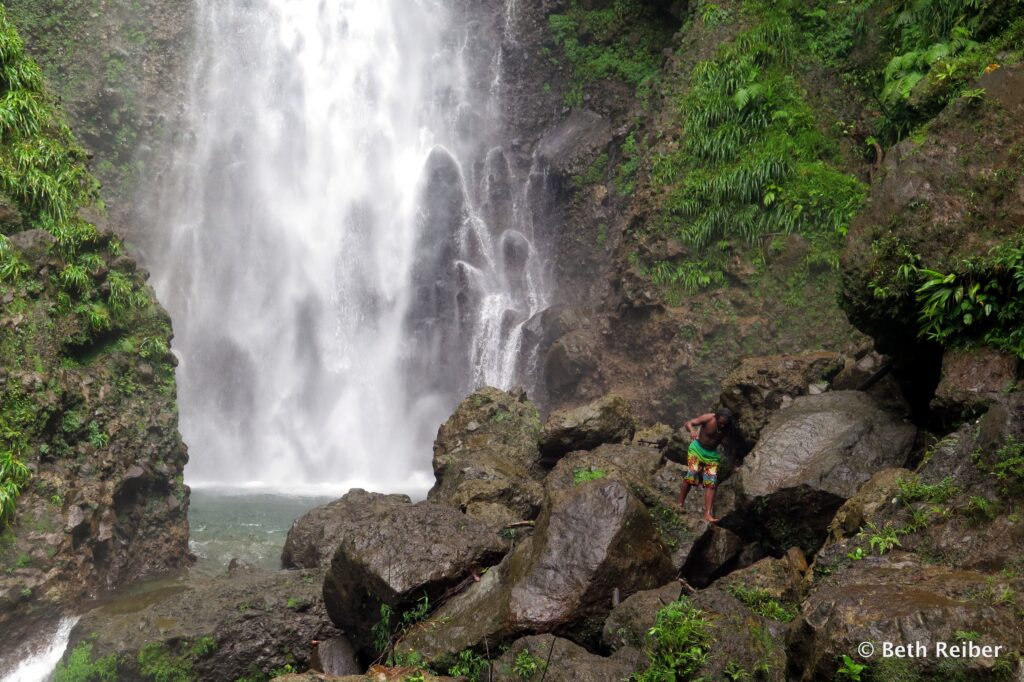
First on the itinerary of our day on the Nature Island of Dominica was a hike to Middleham Falls. It’s located in Morne Trois Pitons National Park, a UNESCO World Heritage Site. Our biologist guide, Marvin, pointed out flowers, trees, and shrubs along the way, like the red ginger lily and blue wax flower. He told us how the forest traditionally provided what people needed, such as resin to start fires or certain leaves to produce soap. The destination of our hike was the waterfalls themselves, at 275 feet the highest in the eastern Caribbean and forming a pool with bracingly cold water for those yearning for a dip. It was on the last stretch of our 2.5-hour hike that I slipped crossing a stream and deposited my camera neatly into the water.
Kalinago Territory
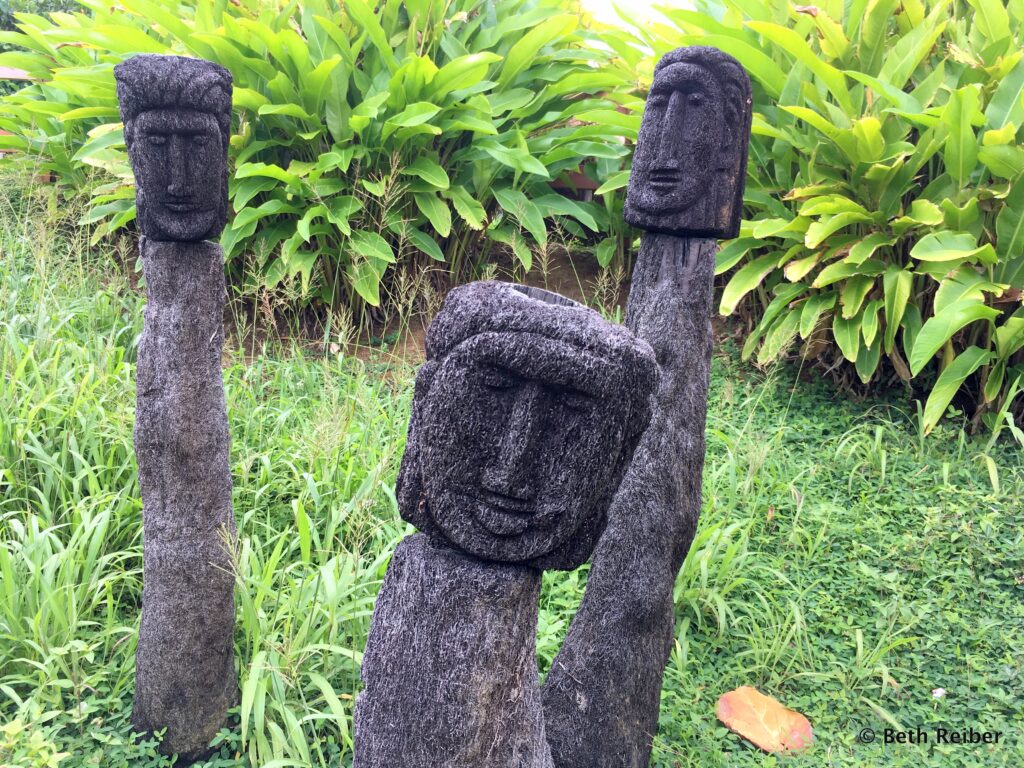
Dominica received its name from Christopher Columbus, who passed by on a Sunday in 1493. Of course, the island’s indigenous people, who called themselves Kalinago, had already named their home Waitukubuli, which means “tall is her body” and is infinitely more interesting. Although indigenous people were expelled or exterminated through much of the Caribbean by successive waves of Europeans, approximately 3,000 Kalinago (formerly referred to as Caribs by the Europeans) still live on Dominica. They inhabit eight villages on Dominica’s east coast, in an area called Kalinago Territory that was granted by the British in 1903 and spreads over more than 3,780 acres. I guess it’s similar to what we call a reservation in the U.S.
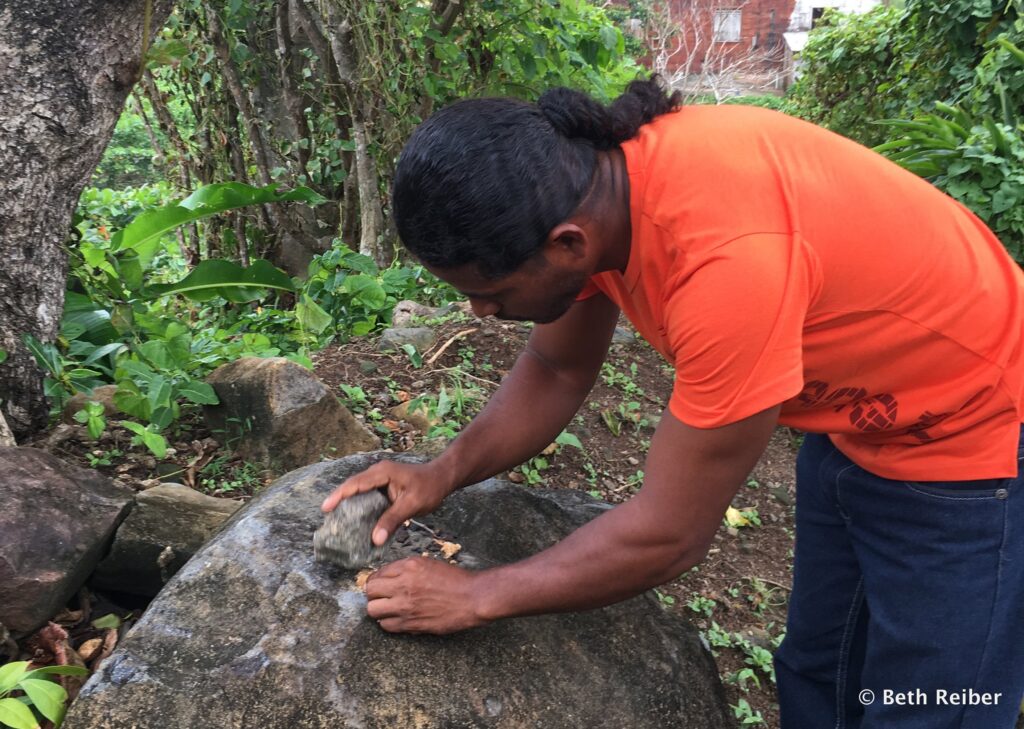
We learned about the Kalinago at Kalinago Barana Aute, a cultural village with an interpretation center, restaurant, souvenir shop, traditional architecture, demonstrations by artisans weaving baskets or making canoes, and cultural performances. Our guide described how useful sour sop is, its fruit providing food, its leaves used for tea and added to baths, and its roots good for inflammation and cooling. Bay leaves can be used for teas and cooking, while its oil is good for massage and aromatherapy. Sea grapes can provide jellies, jam and wine.
Indian River Row Boat Safari
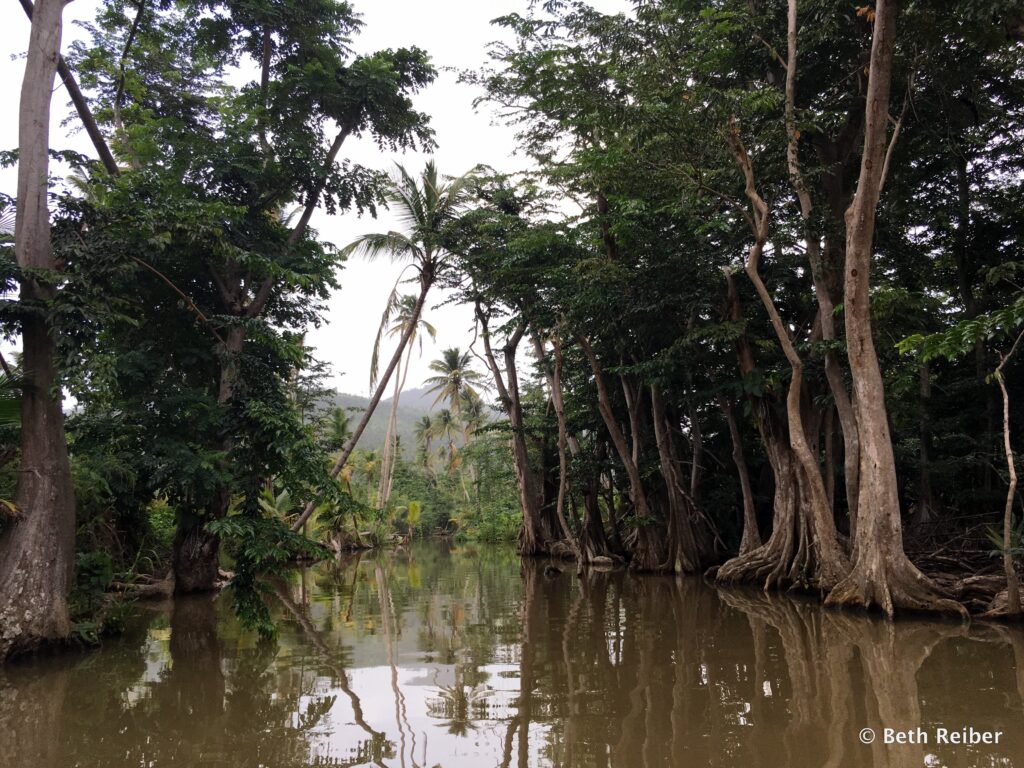
Our last stop of the day was for a peaceful trip on the Indian River aboard a giant rowboat, where our rower regaled us with tales and stories, such as the fact that Dominica has nine of the 16 volcanoes in the Caribbean and that the oldest person on Dominica is 120 years old. I wasn’t able to verify the bit about the centenarian, though I did find several articles referencing another woman who supposedly died in 2003 at age 128. Those seem to be tall tales, since the oldest verified person was reputedly Jeanne Calment, who died in 1997 at the age of 122 (though even that was recently disputed in a New Yorker article). I do know that Okinawans are known for their longevity. Maybe there’s something to living a simple life on a tropical isle surrounded by family and friends. In any case, the river with its mangroves and critters ranging from birds to crabs offers a relaxing journey, unlike its raucous debut in Pirates of the Caribbean.
What we missed on Dominica the nature island
If stormy weather had not disrupted our plans on Dominica the nature island, we would have also gone horseback riding and snorkeling, activities I love. We would have visited Fort Shirley, Dominica’s most important historic site and the scene of a famous revolt in 1802 of African slave soldiers, which resulted in the eventual freeing of all slave soldiers by the British empire in 1807.
Other popular activities, including those offered as shore excursions from cruise ships, are dolphin and whale watching, river tubing, soaking in hot springs and lazing on a beach. Yes, there are beaches, more than 25 of them, mostly on the gentler Caribbean west side (the Atlantic east coast is battered by winds and waves). Rather than white sand, they have gray and black sand due to all those volcanoes, as well as stony beaches.
If I went back to Dominica, I would definitely do more hiking. Our trek to Middleham Falls was just a teaser, part of the Waitukubuli National Trail, the Caribbean’s first long-distance walking trail. About 115 miles long, the WNT traverses the entire island north to south, taking in rainforests, rivers, waterfalls, mountains, Kalinago Territory, Fort Shirley and more. Another popular hike is to the world’s second-largest hot spring, Boiling Lake, a challenging six-hour walk round trip that includes a climb through rainforest, the Valley of Desolation with hot boiling mud, small geysers, fumaroles and Titou Gorge, location for a scene in Pirates of the Caribbean and offering the opportunity to swim through the gorge. Easier short walks lead to Trafalgar Falls with its twin waterfalls and to Emerald Pool for swimming.
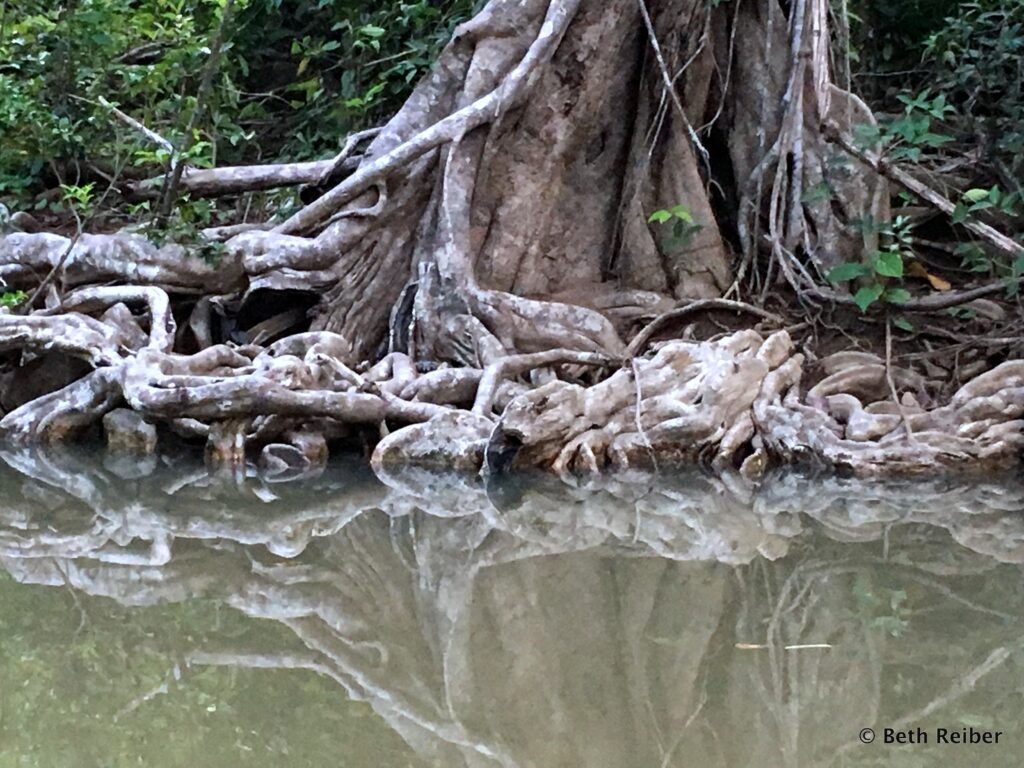
In any case, even one day is enough to see why Dominica is dubbed The Nature Island. But another thing I’d want to do on a return visit is to take up the offer of a home stay with the Kalinago. After all, there are many beautiful places in the world, but the chance to stay with a local family whose ancestors have been around for centuries is something I wouldn’t pass up. Come to think of it, if I had more time I also wouldn’t pass up a hot soak in one or more of Dominica’s many hot sulphur springs.
For updates on COVID-19 and reopening in Dominica, which saw minimal infections (18 at the latest count), see http://dominicaupdate.com/.
